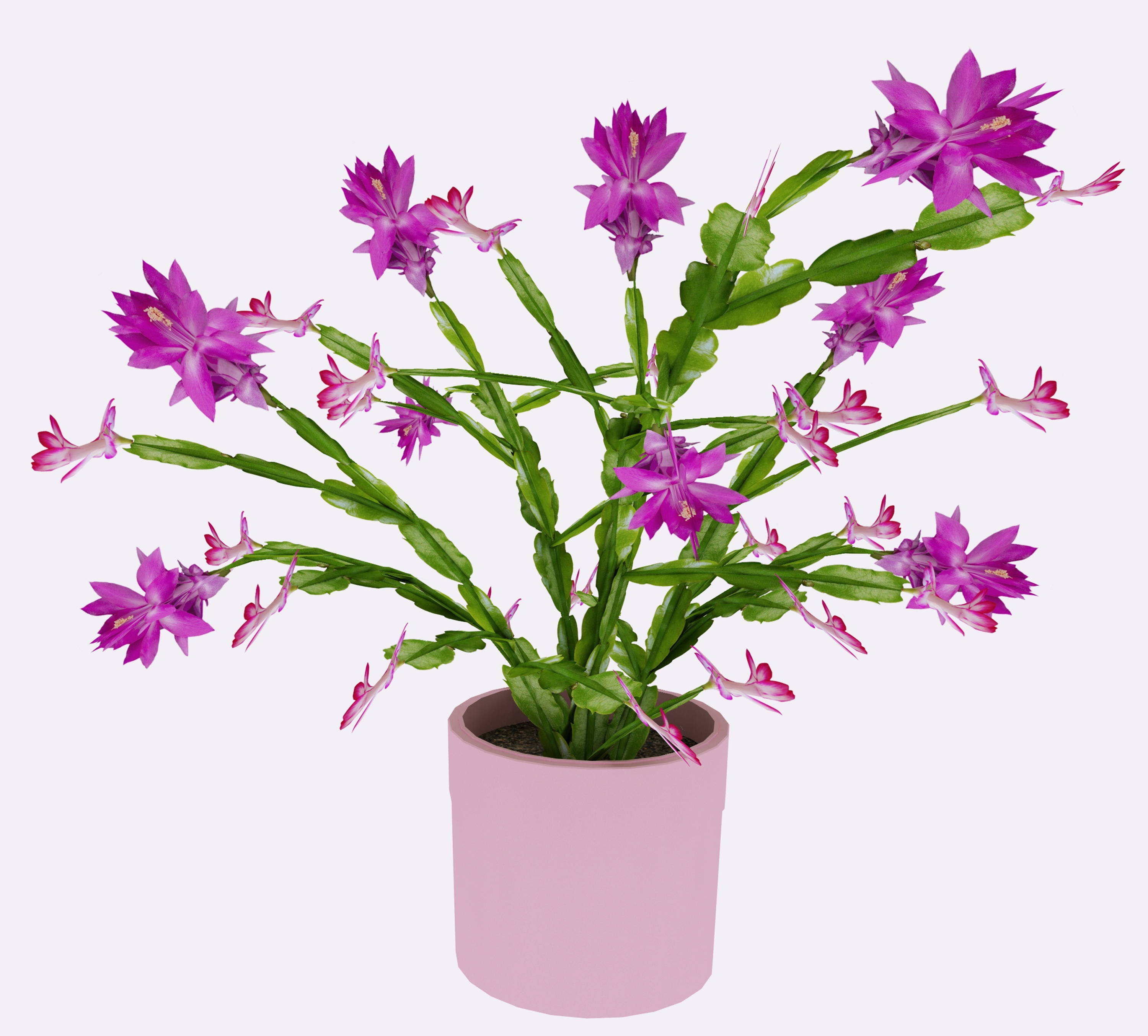How to Care for your Christmas Cactus in 5 Easy Steps

Christmas Cactus
If you are looking for an ornamental houseplant that blooms brilliantly when it is the season for ornaments, then look no further than the Christmas Cactus, or 'Schlumbergera bridgesii'. This flower fluoresces brilliant colors around a red primary, such as pink, orange, or scarlet, depending on the phenotype. When Winter comes and other bloomers are late, the Christmas Cactus’ flowers arrive just in time to show off to your guests!
Caring for Your Christmas Cactus
Christmas Cacti are native to Brazil and belong to the Cactaceae family. Despite their long way from home, they are resilient to many Northern Hemisphere environments which may well be where this article is now being read. Christmas Cacti are diverse and may be hybridized with other cacti, but it isn't something to worry about. All shapes and sizes of Cacti are beautiful, what matters is health. With just a bit of modest maintenance, your Christmas Cactus can thrive most anywhere.
In this care article, we will be covering the care of the Christmas Cactus in 5 segments:
1. Extra Fresh Air Exchange (often abbreviated F.A.E.)
When your plant doesn't quite get enough air circulation around their roots, it invites in less-than-friendly actors (anaerobic pathogens) as well as making it difficult for the roots to survive. Pathogens are competing microbes that feed on the tissue of the plant and/or outcompete for its nutrients. Fresh air exchange gives the roots the strength to maintain immunity, as well as making it harder for anaerobic pathogens to survive. To make sure your plant can breathe easily, we recommend one of our rePotme slot pots. Its patented airflow system around the sides and bottom allows for a generous amount of fresh air exchange and they come in a variety of sizes to accommodate nearly all growing stages of your Christmas Cactus, because all sizes are beautiful. Well-ventilated happy roots make for a happy plant.
If you have a different pot that you would like to use, such as ceramic, glass, or terracotta, rePotme's clear slot pots are often used as inserts for existing pots to drastically improve Fresh Air Exchange.
2. Fungus-Gnat-Resistant Growth/Transplant Media and its Storage
Your cactus may be a bit of a picky eater. It's important to both find things they like, and things that pathogens don't like as much. This cactus loves peat moss, but so do fungus gnats. For that reason; it is vitally important to omit peat moss and instead use coco coir. Your cactus absolutely LOVES coco coir, but fungus gnats can't stand the stuff. For your convenience, we have a fresh and ready-made coco coir-rich potting mix; Cactus and Succulent Classic Potting Mix. It is mixed fresh right before it's shipped to you, and your cactus should take very well to it. For those who like to mix their own media, rePotme has 100% coco coir available.
It is always good to have spare media on hand in case of spillage, growth necessitating a larger slot pot, or just to treat your buddy to some fresh media. When your little cactus grows up to be big and strong, it’s time to do a transplant to a larger container. Please be extra gentle with them, moving to a new container is a little bit stressful for a plant. They have sensitive roots and love to be moved into their new home gently and either before the start of blooming, or moved after blooming has finished. Media should always be changed within year or two.
Our rePotme Cactus and Succulent Classic Potting Mix will keep well if it is dried out on a pan or tray, then put back into its resealable bag and stored in a cool dry place, with a small opening in the bag to prevent buildup of anaerobic pathogens. Happy soil makes for a happy plant.
3. Hydration and Drainage
Your cactus loves water, but everything in moderation. Your cactus needs to be watered frequently so the media is at least a bit moist at any given time, but not drenched and certainly not sitting in stagnant water. If possible, your cactus prefers humidity. This is another benefit to our slot pot; it drains very well and doesn't leave a puddle on the bottom. All of our slot pots' beautiful sizes are equally talented at protecting your cactus from overwatering.
4. Removal of Not-Alive Bits
Your plant is made of many, many cells who work as a team to produce a whole cactus. Sometimes cells wear out and don’t function as well as they used to way back when the extracellular matrix came out. At this point it is time for them to be replaced with newer cells. There is no need to be sad for the cells, for they share a communal brain called deoxyribonucleic acid, abbreviated to D.N.A.. Petals may fall, stems may snap, but new petals and new stems come back most of the time and usually the same. Your plant is always your plant, no matter how many petals and stems get replaced. Sometimes the not-alive bits fall on their own, and sometimes they dry out. If anything falls, it should be removed and discarded. If something is in the process of drying out, you can help the process of regeneration by gently trimming the not-alive bits that haven’t fallen. The best way to go about this is trimming. The insides of the stems are going to touch the cutting blade. These unprotected circulatory vessels and cells are sensitive to both abrasion and infection. Under a microscope, most knives and scissors have very rough surfaces that tear through cells. The roughness is too small to be seen or felt, so a knife is fine for food, it is just cells and vessels that are sensitive to it. A good, intact edge on your plant’s stem lets them pick up growth right where they left off. It is recommended that a sterile scalpel is used, however, if a non-sterile blade is used, it can be disinfected with Physan-20.
5. Feeding Your Christmas Cactus
Your cactus sometimes gets hungry and needs to receive raw materials to build its structures and metabolic systems out of. Plants are like us in that they need both nutrients and energy, however they feed in two parts. Photosynthesis provides your plant with energy, while minerals in the soil provide nutrients. To completely feed your cactus, a small fertilization should be done 1 to 2 times per month. Fertilizers are complicated and would be devilishly tricky to try to mix at home. When you need fertilizer, we have your plant covered with rePotme FEED ME! Fertilizer.
Want More Cactus and Succulent Care Information?
To learn more about caring specifically for your particular cactus, please see our informative pages on succulent care and our directory of care articles. These pages provide all the basic information you need to keep your beautiful cacti happy, healthy, and blooming into the future!

